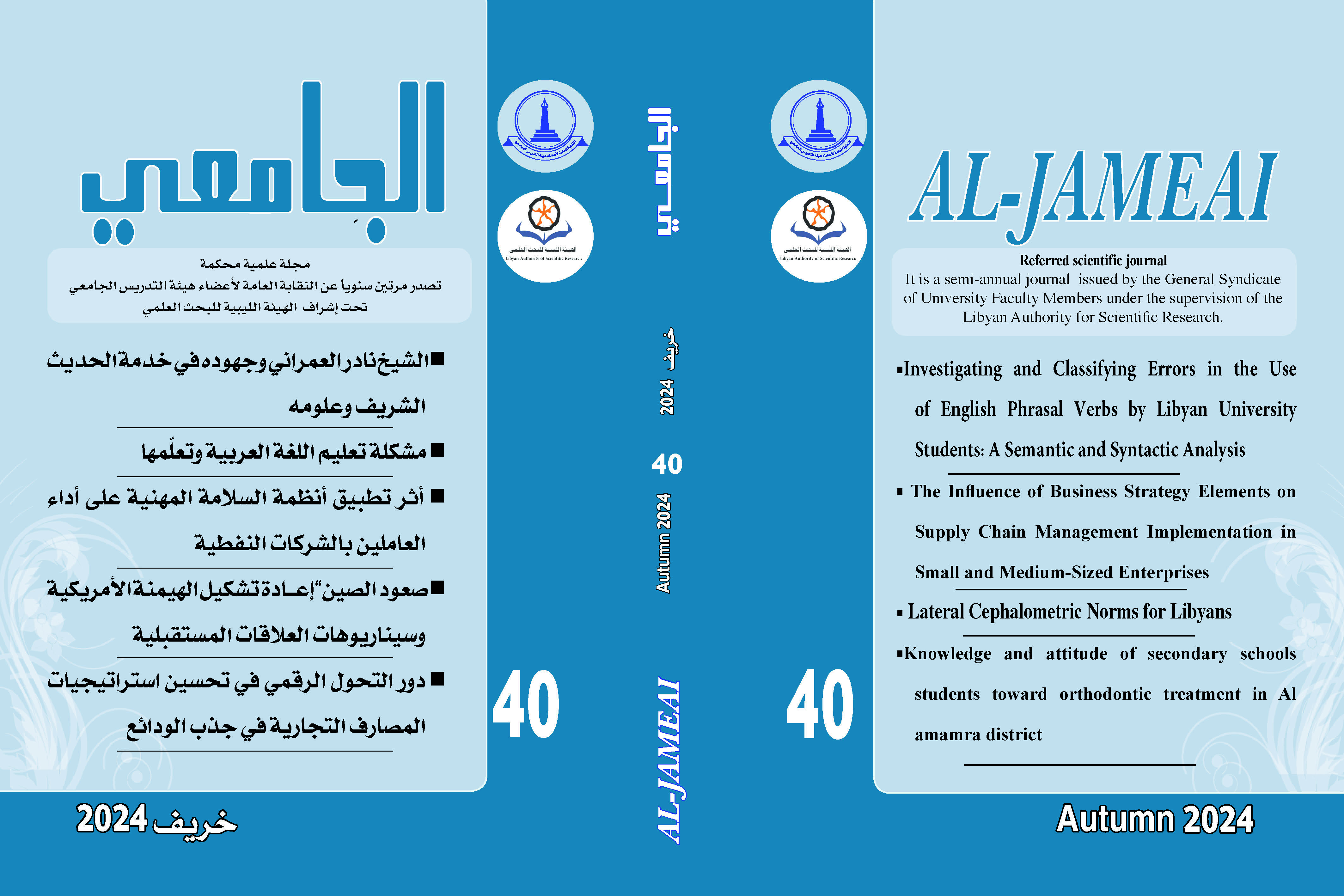التمثيل الكارتوغرافي الجيومورفولوجي الرقمي للمنطقة الممتدة من البيضاء إلى مسه شمال الجبل الأخضر
Abstract
المستخلص:
هدفت الدراسة إلى تأسيس قاعدة بيانات كارتوغرافية جيومورفولوجية رقمية للمنطقة الممتدة من البيضاء إلى مسه شمال الجبل الأخضر بليبيا، اعتمادًا على تحليل نماذج الارتفاعات الرقميةDigital Elevation Models (DEM) ، بواسطة برمجيات نظم المعلومات الجغرافية Geographic Information Systems (GIS)، من خلال تصميم مجموعة من الخرائط الرقمية لخطوط الكنتور والارتفاعات والانحدارات، ورسم قطاعات تضاريسية طولية وعرضية، تُبرز أهم الخصائص الطبوغرافية والجيومورفولوجية للمنطقة، وتحديد أحواض التصريف واستخلاص خصائصها المساحية والمورقومترية، واعتمدت الدراسة على المنهج الوصفي التحليلي والأسلوب الكمي، وتوصّلت لعدّة نتائج منها أن نماذج الارتفاعات الرقمية (DEM) تعتبر بديلًا ناجحًا للخرائط الكنتورية في الدراسات الجيوموفولوجية، لحداثة بياناتها ودقتها العالية؛ وبينت نتائج القياسات المورفومترية للأحواض أن شكلها يميل إلى الاستطالة (تراوحت الاستطالة بين 0.11- 0.28)، وتتسم بارتفاع نسبة تضرّس أسطحها، (تراوحت بين 28.7 متر/ كم- 38.7 متر/ كم)، وأشارت قيم التكامل الهبسومتري (تراوحت بين 0.07- 0.1) إلى أن أحواض التصريف بالمنطقة لا تزال في مرحلة الشباب، وأوضحت دراسة القطاعات الطولية للمنطقة أن سطحها ينحدر تدريجيا من الجنوب إلى الشمال، في حين يبدو انحدار الحافتين الأولى والثانية للجبل شديدًا، وتُظهر القطاعات العرضية لمجاري الأودية التي تخترق الحافتين، إنها تبدو أكثر اتساعًا وعمقًا خلال اجتيازها للحافة الثانية مقارنة بنظيراتها على الحافة الأولى.
Abstract
Based on the analysis of Digital Elevation Models (DEMs) using Geographic Information Systems (GIS) software, this study aimed to establish a digital geomorphological cartographic database for the area extending from Al-Bayda to Massah north of Aljabal Alakhdar mountain, Libya. Maps of contour lines, elevations, slopes, and terrain profiles were created to highlight the region's key topographic and geomorphological characteristics. The study also involved identifying drainage basins and extracting their spatial and morphometric properties. Combining a descriptive-analytical approach with a quantitative method led to several conclusions, including the successful use of DEMs in geomorphological research given their accuracy and newness. Morphometric measurements of the examined basins indicated an elongated shape (ranging from 0.11 to 0.28), characterized by a high relief ratio (varying between 38.7 meters/km and 28.7 meters/km). According to the hypsometric integral values (between 0.07 and 0.1), the drainage basins in the area are still in their youthful stage. Additionally, the longitudinal profiles showed a gradual inclination from south to north, with steep slopes at the first and second edges of the mountain. Furthermore, the transverse profiles of the valleys crossing both edges were wider and deeper when passing through the second edge than through the first.
Downloads









